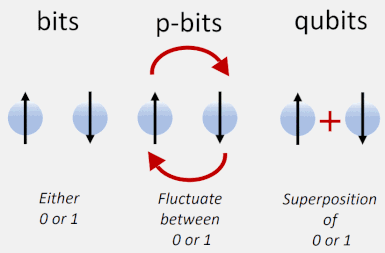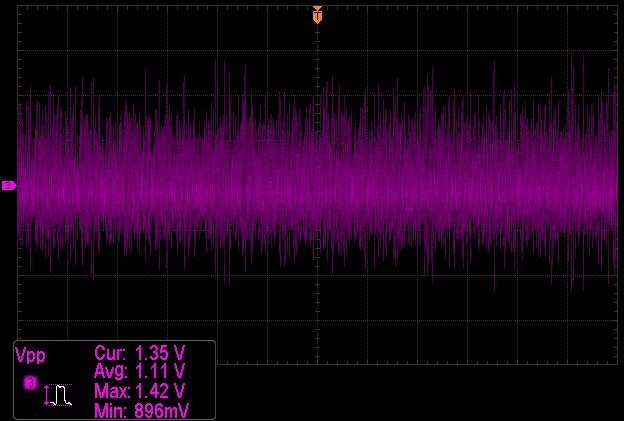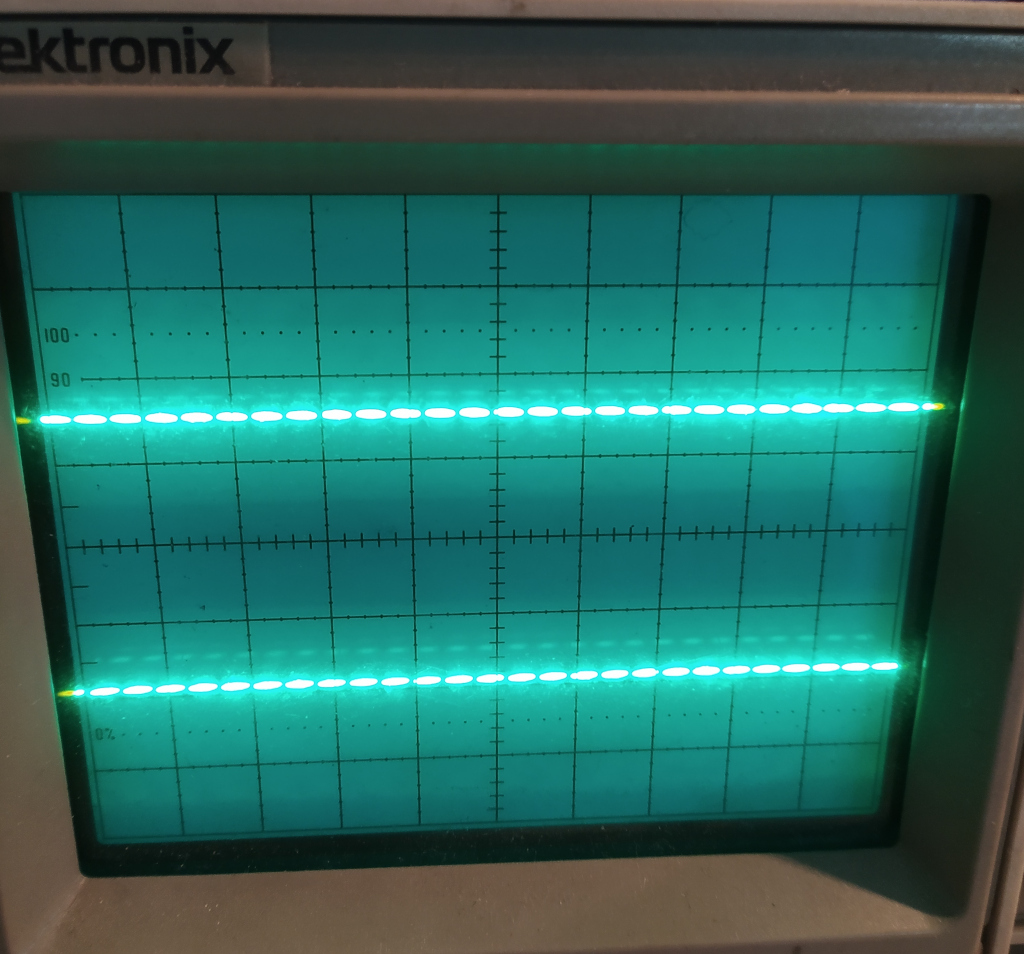Quantum Computing on Arduino
In early 2023, I embarked on a journey to explore the field of probabilistic computing. This endeavor culminated in the construction of a hardware prototype, and this is its story.

The evolution of unconventional computing models, from the analog computing of yesteryears to the promises of quantum computing, has opened doors to new possibilities. Analog computers, with their continuous range of values, offered solutions to certain problems that were computationally intractable for digital systems. Quantum computing, on the other hand, harnesses the principles of superposition and entanglement to perform complex calculations at speeds unattainable by classical computers.
In this ever-expanding landscape of computing paradigms, my curiosity led me to explore the uncharted territory of probabilistic computing. Embracing the inherent uncertainty of probabilistic bits, I embarked on a journey to build a hardware prototype that could compute in a fundamentally different way. This endeavor, while not seeking to overshadow the achievements of traditional and quantum computing, aimed to carve out its niche in addressing specific challenges with a unique perspective.
In the upcoming chapters of this post, I will share the intricacies of my probabilistic computing prototype – the challenges encountered, the design choices made, and the insights gained along the way. Join me on this expedition into the world of probabilities, where the binary certainty of 0s and 1s gives way to a nuanced landscape of potentialities.
A probabilistic bit, also known as a p-bit, is a new type of computational unit that lies between classical bits and quantum bits (qubits). Unlike classical bits, which can only be either 0 or 1, p-bits can fluctuate between the states of 0 and 1. This means that they can represent and process information with greater efficiency than classical computers, and they can also perform certain computational tasks way better than a classical computers.
P-bits were introduced by Supriyo Datta, a professor at Purdue University. Datta’s research suggests that p-bits could be used to create a new type of computer that is more powerful and energy-efficient than current computers.

Here are some of the key properties of p-bits:
Datta has proposed a number of potential applications for p-bits, including optimization, machine learning and invertible logic.
The application of p-bits that caught my attention the most, is the invertible logic; using p-bits we are able to implement any boolean function and find the input that produces a specific output in an efficient way. This process resembles the one performed by a Grover search in a quantum computer.
There are several potential hardware approaches for implementing p-bits, but one of the most promising is to use spintronics. Spintronics is a field of electronics that utilizes the spin of electrons, in addition to their charge, to store and process information. Spintronics offers several advantages for implementing p-bits, including:
One specific approach to implementing p-bits using spintronics is to use magnetic tunnel junctions (MTJs), where the spin is able to fluctuate randomly between the two orientation million of times in a second.
Zener diode avalanche breakdown is a phenomenon that occurs when a reverse-biased zener diode is subjected to a sufficiently high reverse voltage. The high electric field across the depletion region of the diode causes electrons to gain enough energy to break away from their covalent bonds and become free electrons. These free electrons collide with other electrons and atoms, creating a chain reaction that releases a large amount of energy in the form of heat and light.

The avalanche breakdown process is a random event, and the amount of current that flows through the diode is not directly proportional to the applied voltage. This makes zener diodes a good source of entropy, which is a measure of randomness or uncertainty. For my prototype I choose to use this effect to generate the random oscillations of the p-bits.
The first step in building the prototype was to design the PCB layout. This was done using the free and open-source electronic design automation (EDA) tool KiCad. The PCB layout for the prototype was relatively simple, consisting of a handful of components, including TL072 op-amps, zener diodes, and passive components like resistors and capacitors. The op-amps were used to amplify the random signals generated by the zener diodes and to combine them with p-bit inputs, while the passive components were used to condition the signals and provide biasing for the op-amps.
Once the PCB layout was finalized, it was exported to a Gerber file, which is the standard file format used for PCB printing. The Gerber file was then sent to a PCB fabrication service, where five copies of the PCB were printed on a high-quality circuit board material.

With the PCBs in hand, the next step was to assemble the circuit. This involved carefully placing the components onto the PCBs and soldering them in place. The process was relatively straightforward, but it required patience and attention to detail to ensure that the components were properly aligned and soldered.

With the hardware prototype assembled, I was eager to put it to the test and explore the computational capabilities of probabilistic computing. To begin, I focused on implementing fundamental reversible logic gates in the probabilistic domain.

The reversible AND gate is a crucial component of probabilistic computing, enabling the manipulation of probabilistic states in a reversible manner. I designed a circuit that could implement the reversible AND gate using my probabilistic computing prototype.

In this video I show the probabilistic not gate implemented using two p-bits.
The successful construction of my probabilistic computing prototype marked a significant milestone in my exploration of this emerging technology. While the prototype demonstrated the feasibility of probabilistic computing principles, scaling up to larger-scale systems remains a challenge.
The current design employed a centralized approach, where all p-bits were interconnected (using a breadboard), making it impractical to scale to millions of p-bits. To address this scalability issue, decentralizing the p-bit circuitry and employing communication protocols to exchange information between p-bit clusters could be promising strategies.
Further research is needed to optimize the hardware architecture and develop efficient communication protocols to enable scalable probabilistic computing systems. The potential of probabilistic computing to tackle complex problems with enhanced efficiency and robustness remains a compelling motivation for continued exploration and innovation.
Useful Links:
During my Quantum Computing journey, I often needed to simulate some quantum circuits; sometimes they are small, but some other times they are bigger enough ...
Despite it is sold as a non-cartographic handled GPS device, with limited storage capacity of 10 MB and the inability to expand it, the eTrex 10 GPS, like al...
Since the latest v0.1.18 version, the Qlasskit library offers two useful tool for circuit analysis and optimization.
In the last release of Qlasskit, I introduced a new feature able to export a qlassf function to a binary quadratic model (as bqm, qubo or ising model). This...
In early 2023, I embarked on a journey to explore the field of probabilistic computing. This endeavor culminated in the construction of a hardware prototype,...
Today, I’m going to show you how to use Qlasskit to create a quantum circuit able to search for Sudoku puzzle solutions.
In a recent article I wrote, “Quantum Computing on a Commodore 64 in 200 Lines of BASIC”, published both on Medium and Hackaday.com, shows a two-qubit quantu...
Traditionally, creating quantum circuits requires specialized knowledge in quantum programming. This requirement holds true when encoding a classical algorit...
In an age where companies are selling two-qubit quantum computers for a sum of money that would make your wallet recoil in horror, here we are, stepping off ...
This June I emerged as one of the top participants with 9 bounties collected (alongside another exceptional contributor) in the #UnitaryHack Hackathon, hoste...
A few days ago I came across a yt video discussing the ESA Copernicus program, a European initiative for monitoring earth via a satellite constellation. This...
Qiskit is a python SDK developed by IBM and allows everyone to create quantum circuits, simulate them locally and also run the quantum circuit on a real quan...
As someone noticed from the previous post, last weeks I started to write a new programming language for Tezos smart contracts. This project was initially int...
While writing a new programming language, it is often useful to write some real use-cases to test the syntax, the language expressiveness and the code cleann...
Documentation is like sex: when it is good, it is very, very good; and when it is bad, it is better than nothing
This is my new blog, based on jekyll. I’ll soon import old posts from my old blog.
Contractvm is a general-purpose decentralized framework based on blockchain. The framework allows to implement arbitrary decentralized applications in an eas...
Most of bitcoin dice software use a system to prove the fair play of the server for each bet. Most of them implement this mechanism using two seed (server se...
In the aim to merge two of my server on digitalocean, today I tried to write a mod_rewrite rule to redirect a secondary domain to a subfolder. After one hour...
MineML is a multithread CPU based bitcoin miner written in F#. At the moment it’s a slow implementation, but the class structure offers the possibility to im...